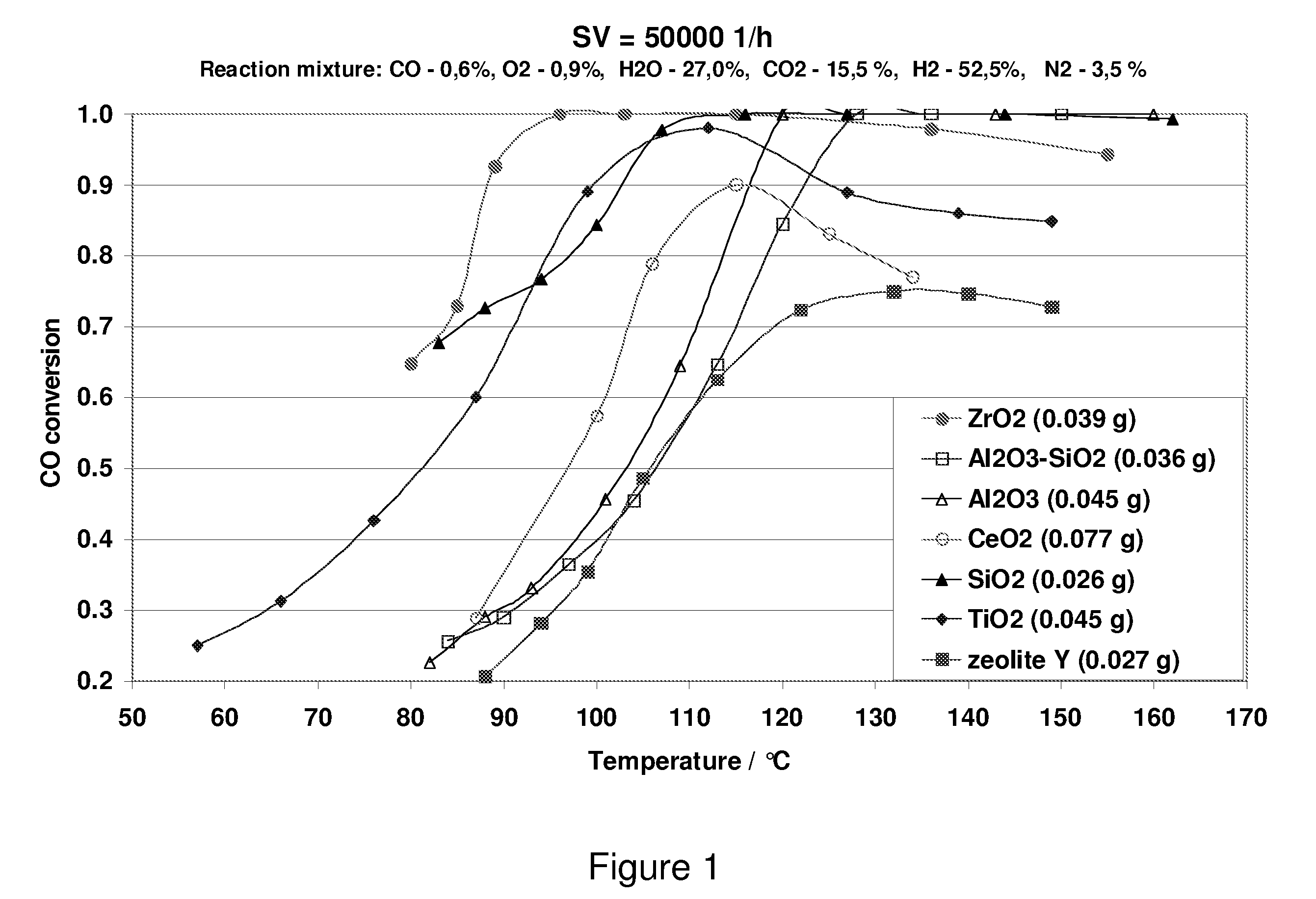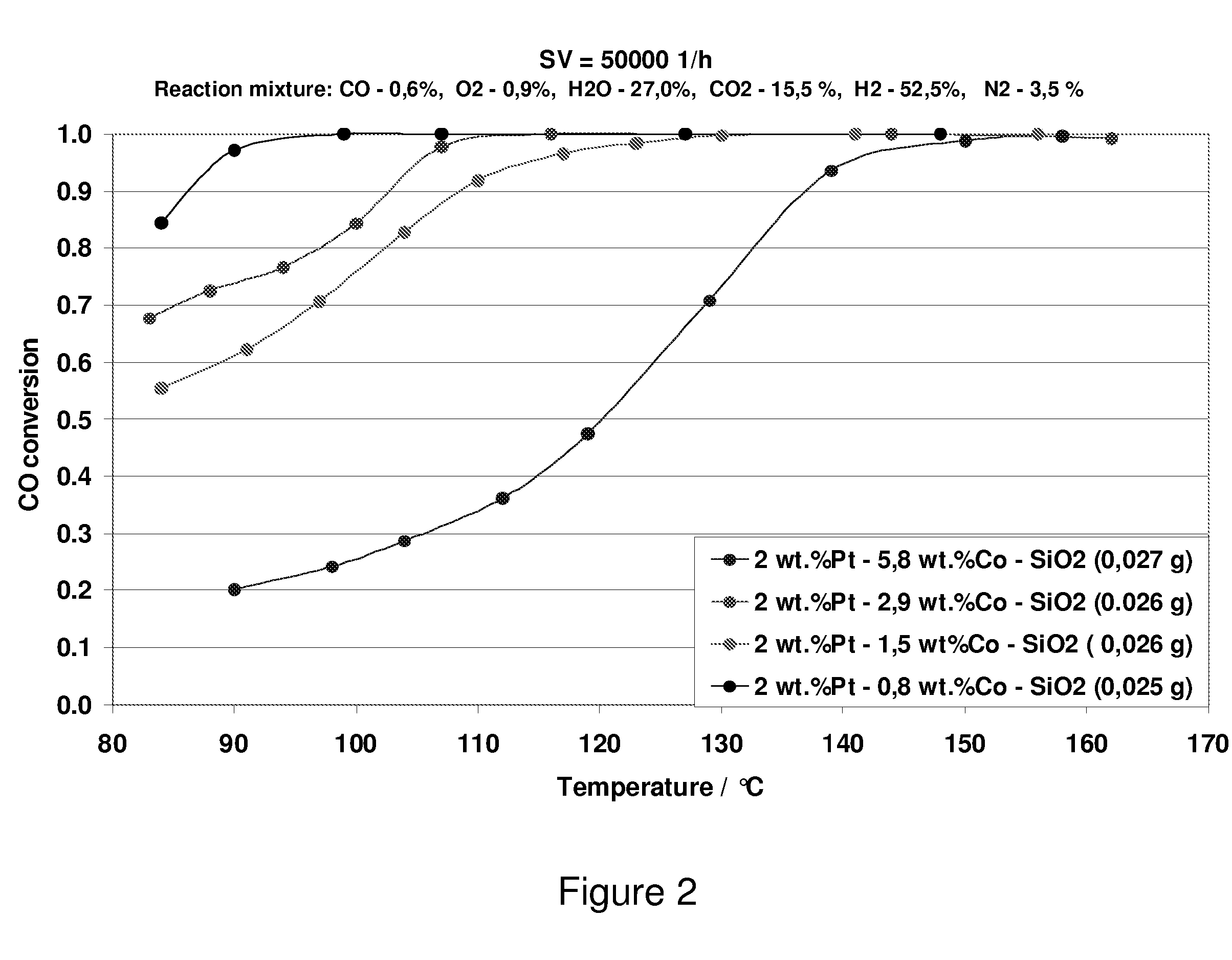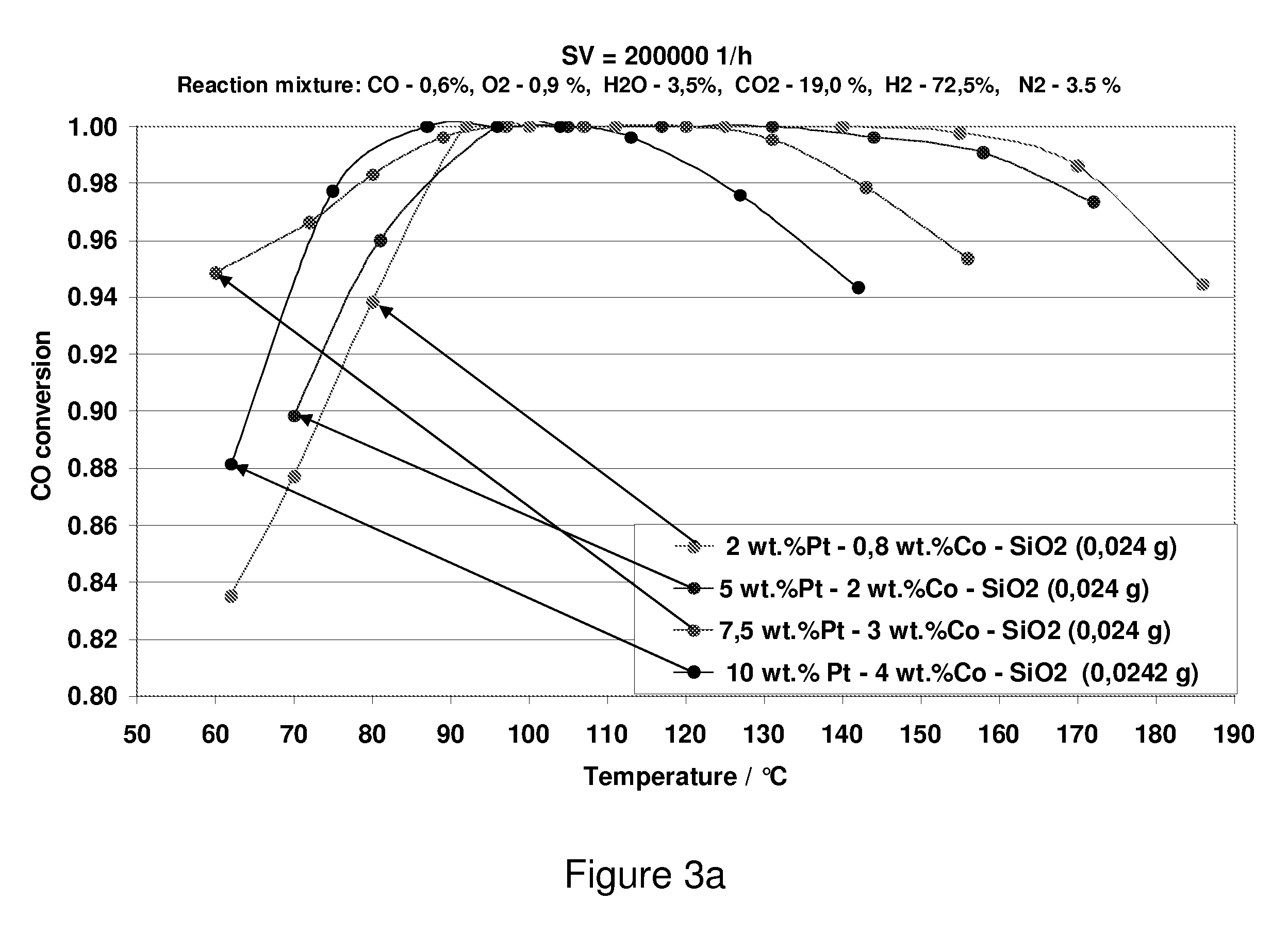Carbon Monoxide Catalyst
- Summary
- Abstract
- Description
- Claims
- Application Information
AI Technical Summary
Benefits of technology
Problems solved by technology
Method used
Image
Examples
example1
Production of Silicon Oxide of the MCM Type According to the Present Invention
[0059] The MCM material was produced by a method analogous to Comparative Example 1 but using didecyldimethylammonium bromide [CH3(CH2)9]2(CH3)2NBr (DDDA-Br), 75% by weight gel in water (Aldrich) in place of hexadecyltrimethylammonium bromide. A quantify of 16.9 g of DDDA-Br were dissolved in a solution comprising 125 ml of absolute ethanol and 90 ml of water. After stirring at ambient temperature for 30 minutes, 8% by weight of TEOS were added to the solution while stirring intensively. After stirring for 5 minutes, 60 ml of a 25% strength ammonia solution were added to this solution while stirring vigorously, with only partial precipitation of a white precipitate occurring. The gel formed was stirred overnight at ambient temperature, subsequently filtered off and then dried at ambient temperature in a dry box. The DDDA-Br was removed by calcination at 500° C. for 6 hours. The BET surface area of the sa...
example 2
Production of Zirconium Phosphate Having a Large Surface Area According to the Present Invention
[0062] The zirconium phosphate was produced as in Comparative Example 2, with zirconyl acetate instead of zirconyl chloride being additionally used together with the addition of didecyldimethylammonium bromide (DDDA-Br) in order to avoid contamination of the catalyst with chloride ions. A quantity of 61.5% by weight of zirconyl acetate solution (15% by weight of Zr, Alfa Aesar) was mixed with 20.3 g of DDDA-Br (Aldrich) in 50 ml of water at ambient temperature while stirring. 23 g of H2NH4PO4 in 200 ml of water were subsequently added to this solution. After stirring overnight, the precipitate was filtered off, washed and dried at 100° C. It was subsequently calcined at 550° C. for 6 hours. The BET surface area of the sample was 475 m2 / g.
example 3
Production of the Pt—Co Catalyst on Various Oxides According to the Present Invention
[0063] The support structures produced in Examples 1 and 2 and in Comparative Examples 1 and 2 were impregnated with a warm solution (85° C.) comprising tetrammineplatinum (II) hydroxide or tetrammineplatinum (II) nitrate, cobalt nitrate, tartaric acid and / or citric acid and / or malic acid. The citric acid and / or tartaric acid were / was added in a slight excess of 1.2 (times the stoichiometric molar ratio of citric acid / Pt+Co=1). The loading with platinum and cobalt was varied in the range from 1 to 40% by weight and from 0.5 to 30% by weight, respectively. The samples were dried overnight at 77° C. in a dry box and were finally calcined at 550° C. in air for 2 hours.
PUM
| Property | Measurement | Unit |
|---|---|---|
| Fraction | aaaaa | aaaaa |
| Fraction | aaaaa | aaaaa |
| Percent by mass | aaaaa | aaaaa |
Abstract
Description
Claims
Application Information
 Login to View More
Login to View More - R&D
- Intellectual Property
- Life Sciences
- Materials
- Tech Scout
- Unparalleled Data Quality
- Higher Quality Content
- 60% Fewer Hallucinations
Browse by: Latest US Patents, China's latest patents, Technical Efficacy Thesaurus, Application Domain, Technology Topic, Popular Technical Reports.
© 2025 PatSnap. All rights reserved.Legal|Privacy policy|Modern Slavery Act Transparency Statement|Sitemap|About US| Contact US: help@patsnap.com



